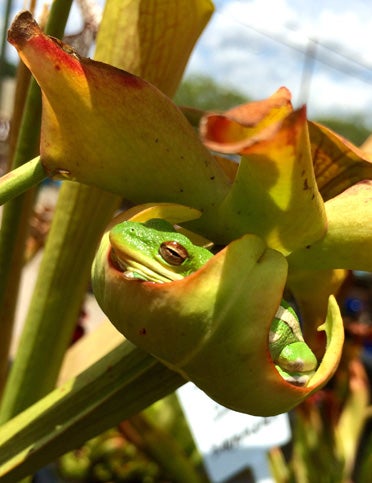Yawn shares knowledge of carnivorous plants
Published 2:48 pm Tuesday, September 20, 2016
By LAURA BROOKHART / Community Columnist
“My fascination for carnivorous plants really all began with my mom bringing home a Venus flytrap when I was five or six,” Noah Yawn, HHS junior, says.
“I showed my grandmother my new plant, and thinking it would help it grow, she fed it hamburger meat. Well, let’s just say flytraps don’t really like burgers…it died. It was a snowball effect after that—I just wanted to grow more!”
The last couple of years, Yawn said he has developed his interest in the North American pitcher plant, the Sarracenia, especially after seeing them in the wild down in Mobile.
“My true passion is their conservation in their native wetland habitats,” he said. “It is just heartbreaking to see these beautiful plants in their habitat and go back a year later and there’s a gas station on top of where they used to be.”
Luckily, Yawn has found, there are preserves and state forests that have protected land where these grow. One place in central Alabama houses the Alabama Cane Brake pitcher plant, Sarracenia alabamensis.
“These plants only grow in two counties (Autauga and Chilton) and only eleven sites remain, three being viable for long-term survival,” he said. “They’re so unique too. Their flowers smell exactly like raspberries!”
Fortunately, Yawn told me, Birmingham Botanical and Atlanta Botanical are working to propagate these plants and reintroduce them into the wild.
Now the pitcher plants, which also are grown at Aldridge Gardens, have always made me think of pretty ballerinas. I did not realize their modified leaves are pitfall traps featuring a deep cavity filled with digestive fluid liquid where they capture foraging insects, especially flies, moths, wasps, butterflies, beetles and ants.
Yawn shared, too, that another milestone for him this summer was teaching his first class on carnivorous plants to a group of garden club ladies based out of Birmingham Botanical Garden.
Yawn also invited me to chew on a perky yellow-blooming plant that Myers now stocks. In a matter of seconds my tongue was tingling and then numb.
This is Spilanthes acmella, known as the toothache plant. Traditionally used in Africa as a local anesthesia, it has spread through into cultivation and treated as an annual.
“You can dry the leaves and brew them in tea for soothing a sore throat,” Yawn added. “Echinacea, the purple coneflower, is used for cold treatments.”
“Medicinal plants,” he concluded, “grow everywhere in Alabama, as long as you know where to look.”
As the Facebook page (Facebook.com/Myers-Plants-Pottery) proclaims, “Come pick out a carnivorous Venus flytrap or pitcher plant. They’re good for what bugs you!”









